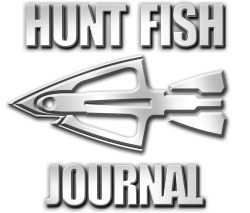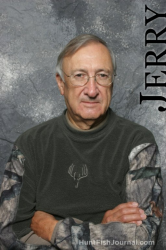LISTEN TO THE PODCAST HERE:
Jerry Everhart Part 2 Mock Scrapes & Sunlight


And listeners, if you haven’t listened to Episode 188 Part 1, please stop, go back and listen to yesterday’s episode because what we’re going to do today is we’re going to really get down and the whole technique of what Jerry had done in the industry about rut functional hunting methods that calculates the key days of rut, and hunts over a specific pattern of mock scrapes. Jerry Everhart Part 2 Mock Scrapes & Sunlight
Yesterday we ended up with mature bucks are a different breed of cat as I like to say. And to hunt them successfully, you’ve got to think like a buck and you’ve got to do things differently if you really want to find Mr. Wonderful in your wood lot. Jerry Everhart Part 2 Mock Scrapes & Sunlight
It depends upon what you want to get out of hunting.
Over 45 years. I’ve been successfully killing, harvesting whitetail bucks probably for the last 15 to 20 years. And I would say in the last 15 years, it’s been honed, the process is honed down to where it’s more of a method of doing it, and you can parts of the method and be more successful, or you can use the whole method and be very successful. It’s really up to the listener. It depends upon what you want to get out of hunting. Some people don’t really care about just killing a big buck. They just want to go deer hunting. Well, this works for deer hunting period, does, buck alike. But if you try to apply the whole method, you’ll find out it’s giving you your best chance to kill that mature buck.
There’s the seek stage in the rut
So what I have learned with all the data that I have taken over the years and narrowing it down, you need to know the best days to go to your stand to hunt those big bucks, the good mature bucks. And those days has to do with the rut of course. That has to do when the bucks are interested in the does to the point that they throw caution to the wind. It’s the time that they transition from night time activity of making scrapes, going through the woods, what we call being horny. That’s their livelihood. And then there’s a time to where they cannot resist moving from that night time activity to day and night activity. And for me, the data that I’ve collected over the years, that’s what I’m interested in. We know that they’re stages in the rut. There’s the seek stage in the rut.
So once I found that out, wow, that opened up a whole new door to me. I mean this is fantastic. And then I realized, okay, I know that if I go to my stand too early, then I’m creating pressure. So I decided, well, I needed to do something a little different. I need to set up more than one stand so I can hunt during the year. So I decided that I would set these stands up, every stand that I have, I will set them up in what I call a rut functional pattern. In other words, every stand that I have, I don’t care if it’s my worst stand, I don’t care if it’s my best stand, I don’t care if it’s in my backyard, I make all stands the same, same pattern, set up the same way to take advantage of the sex drive of the buck.
So I take advantage of the mating instincts. Now the mating instincts, you say, well that only happens, the rut only happens a few days out of the year. Well, the breeding season does, but after that buck sheds his velvet, a few weeks or a week or two after he sheds his velvet, he’s interested in estrus does. He just can’t find one. There’s just not any. If he can find one, he would be interested in them. That’s why they spar, that’s why they do the things that bucks do. So I like to set every stand up as if this buck is seeking a doe, and he thinks that doe is in my woods, in my wood lot, or at my stand. So that’s what I do.
Knowing now that I need to know the key days to be there is top on my list
Knowing now that I need to know the key days to be there is top on my list. This next thing, the second thing on my list, is to make sure that that stand is set up to where I’m going to call those bucks to my stand and not just take a chance that they’re going to cross through my property, and happen to cross by my stand. I want them to know that place where I’m at is the best place to be. So that’s how I set those stands up, to where I’m getting the attention of these bucks to my stand location. Now the stand that I think is the best stand, my best rut stand, I will not hunt that one until the key dates.
That stand is dedicated, or those stands, and I’ll dedicate probably two to three stands. I’m fortunate enough to hunt three different properties and I may have two good rut stands on one property, and I will not hunt those stands. I will not hunt them until the best days to hunt, the days when they transition, those bucks transition from night time to day and night, and I want to be there that day. I want to be there when their sex drive is the highest, and they believe there’s a doe there.
So the other stands that I have, I call tinker stands. I don’t know if you’ve heard that term before or not.
Please subscribe, rate and review each @WhitetailRendez podcast at http://getpodcast.reviews/id/1032967565
